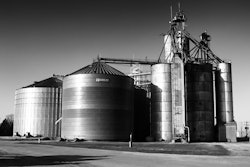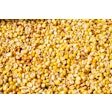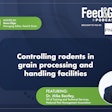
A number of country elevators, processors, feedlots, exporters and others have gotten surprise audit calls from their futures broker over the past year on certain futures transactions. They say CME is asking for cash grain contracts, delivery tickets or bills of lading, and proof of payment. So what’s up with that? Does CME Group think elevators are doing something wrong?
A little background is in order
Hedging entails some risk of price slippage: An ethanol plant buys cash corn from a farmer with futures at $4.00, but gets the futures hedge sold at $3.99, for example. Of course futures might have moved up 1¢, but merchandisers will agree that it doesn’t seem to work that way very often.
The risk of price slippage may not be a big deal on small quantities but if an elevator wants to price a unit train, or a soybean crush plant buys half a million bushels from a grain company, even ¼¢ can get costly.
Eliminate the price slippage
One way to eliminate any slippage is for the cash grain buyer and seller to “trade” futures with each other at an agreed upon price. Instead of selling futures the ethanol plant just “gives” futures to the elevator that needs to buy futures, or the soybean crush plant (buyer) gives soybean futures to the grain company who needs to buy futures Both sides agree on the futures price and each side gets a “perfect” hedge. In the grain trade these are commonly known as “EFPs” — an “Exchange For Physicals” or more commonly, they’re called “Versus Cash” transactions.
The only problem is that an EFP is a pre-arranged, noncompetitive transaction and the price isn’t made public. Futures are all about competitive trade and price-discovery so this is not a small issue. But the CFTC and the Chicago Board of Trade long ago recognized that two parties simultaneously doing off-setting futures transactions wouldn’t affect price discovery, and carved out the EFP exemption and set up rules that govern EFPs.
Rule 538 of the Chicago Board of Trade Rulebook defines EFPs as follows (7/2015):
“An Exchange for Relation Position (EFRP) transaction involves a privately negotiated off-exchange execution of an Exchange futures or options contract and, on the opposite side of the market, the simultaneous execution of an equivalent quantity of the cash product, byproduct, related product, or OTC derivative instrument corresponding to the asset underlying the Exchange contract.”
Rule 538 provides for three types of EFRP transactions, encompassing futures, swaps or options. In the commercial ag sector the most common is the familiar EFP — Exchange of Futures for Physicals — defined as:
“The simultaneous execution of an Exchange futures contract and a corresponding physical transaction or a forward contract on a physical transaction.”
Because EFPs and the other EFRPs are negotiated privately and traded noncompetitively, EFPs are subject to restrictions and rules that include not only the exchange-traded futures but the underlying cash-market contract and transaction records. And under CBOT rules, Futures Clearing Merchants (FCMs) are also mandated to exercise “due diligence” that EFPs are legitimate. The CME Group’s Market Surveillance Department audits a percentage of all EFPs and notifies the FCM which then requires the customer to produce underlying documentation of the cash grain transaction, to verify that the exchange of futures wasn’t a ”front” for some illicit trading. Audits are retroactive and can involve EFPs from one to two years ago.
CFTC can also require a Clearing Firm and its customer to produce the supporting documents under CFTC Rule 1.35, and at the extreme, the U.S. Department of Justice could request such if it relates to suspected fraud or other illegal activity.
What changed?
In late 2013 the CFTC finished a Rule Enforcement Review of the CME Group and concluded CME had audited too few EFRPs, citing only 16 in-depth reviews out of 484,000+ transactions (note: across CME livestock and grain/soy futures). The low number may speak mostly to CME/CBOT’s confidence that the vast majority of EFPs are legitimate transactions that don’t deserve heightened scrutiny. But CFTC instructed CME to expand EFP audits, citing several areas to monitor more closely:
- unusually small EFPs, such as 1-lots,
- parties with a lot of EFPs,
- noncorrelation between the futures and the underlying transaction, and
- EFPs between affiliates.
Some of this enforcement enthusiasm likely ties back to a broader focus on fraud prevention post-MF Global, and under the new Dodd-Frank mandates. But the EFP rules predate that, and CME Group is mandated to increase scrutiny of EFRPs, which means a lot of clean EFPs are now getting audited.
What does CBOT Rule 538 stipulate about EFPs?
538B: The opposing accounts to an EFRP must be:
- Independently controlled accounts (ICA) with different beneficial ownership, or
- ICA of separate legal entities with common beneficial ownership, or
- ICA of the same legal entity provided the account controllers operate in separate business units.
538C: Each EFRP requires a bona fide transfer of ownership of the underlying asset between the parties.
538H: Parties to an EFP must maintain all records to the Exchange contract and the related position, including (futures) order tickets, records of payment between the parties, transfer of title where appropriate, as well as any other records required under CFTC Rule 1.35. Brokers who facilitate EFRPs must maintain all relevant records (includes futures statements).
Important reminders for EFPs:
- The cash grain and futures quantities must be reasonably comparable. Exchanging 50K bushels of futures to price a 10,000-bushel cash contract would not pass muster.
- The commodities must be comparable: Exchanging gold futures to price a cash soybean contract would fail that test. Exchanging soymeal futures to price a canola contract would be acceptable.
- Futures customers cannot exchange futures between different accounts held by the same customer.
- Keep your cash grain contracts and confirms on file. Keep all futures statements and order tickets as well.
- String trades are common in the grain trade. Firm A sells a train to Firm B who later sells the same train to Firm C, for example. Under Rule 538C Firm A cannot exchange futures with Firm C to price both contracts. The EFP must be between the two parties to a contract.
- Take time to instruct your traders and hedge clerks who may execute an EFP about these regulations.
Conclusion
To country elevators and other grain firms, an occasional EFP audit is mostly a nuisance and an inconvenience. If CME selects one or more of your EFPs for review, you’ll have to dig through records, make copies of documents, and submit them so they can be reconciled with the similar documents from the other party (e.g., an ethanol plant and a country elevator). That still seems like a small price to pay to eliminate price slippage on all the grain you hedge and sell each year.
Hypothetical performance results have certain inherent limitations, and do not represent actual trading. Past results are not indicative of futures outcomes. Trading futures involves risk of loss.
Footnotes:
The complete CBOT Rulebook is available online at http://www.cmegroup.com/rulebook/CBOT/
The July 2013 Rule Enforcement Review of the CME Group by the CFTC by the Division of Market Oversight is available at www.cftc.gov.



















